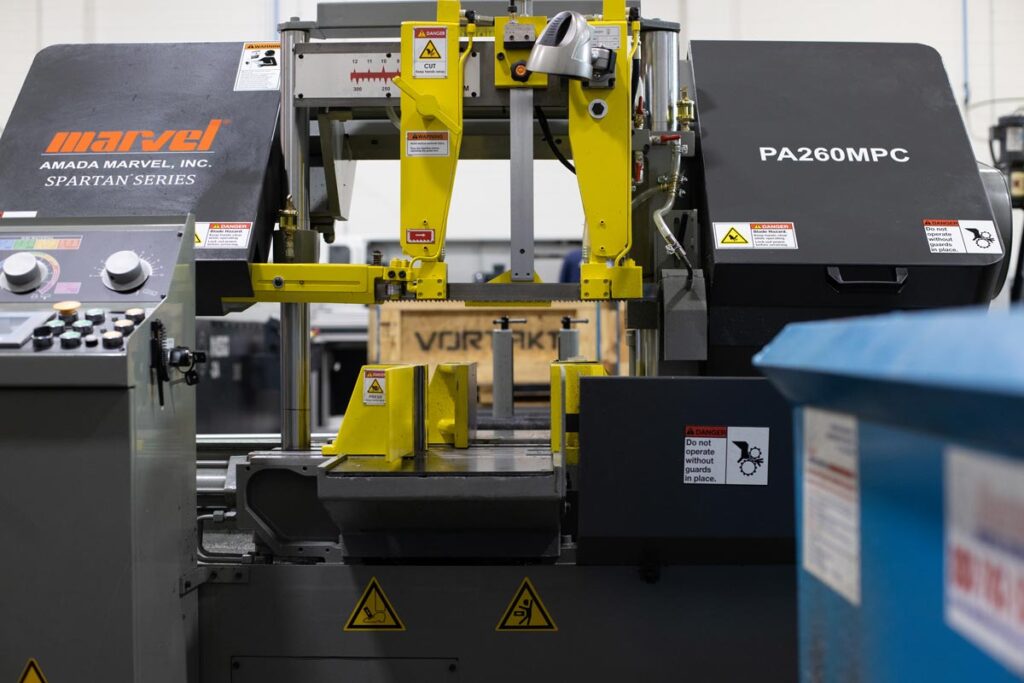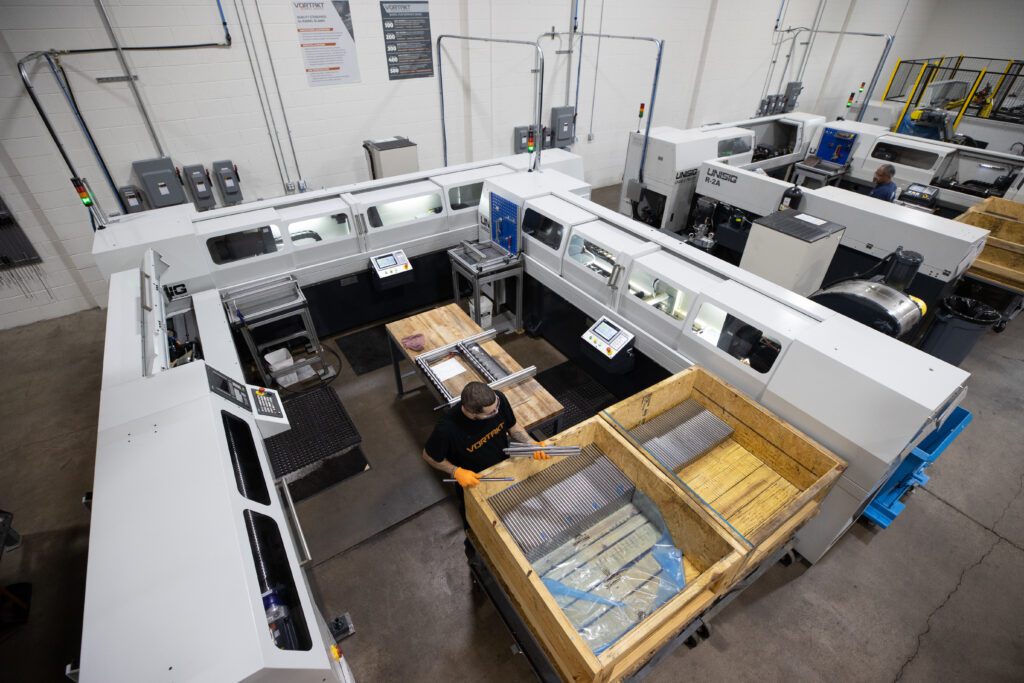How Does Vortakt® Barrel Works Streamline Barrel Production?
There has been a long-held assumption passed through the firearm industry that the manufacturing process of rifle and pistol barrels is “Black Magic.” While the various elements required to produce a top-quality barrel may require specialized machines, quality tooling, and select lubricant recipes, the truth of the matter is that it’s far from a secretive dark art. It’s simply leveraging manufacturing technology and maintaining good engineering practices to consistently hold the prescribed tolerances in as efficient a manner as possible
In the first article of this two-part series, we’ll walk you through the steps involved in barrel blank manufacturing, detailing how our process flow and automation serve to reduce cost, improve quality, and limit lead times.
Material Selection and Processing
In order to effectively automate the manufacturing process and ensure consistency from barrel to barrel, it’s essential that a manufacturer controls variables by selecting only the highest quality raw materials. Many barrel manufacturers will source material from various mills based on availability and pricing, but it’s a little-known fact that general terms like “416R Stainless Steel” or “4150 Chrome-Moly Vanadium” do not equate to identical metallurgy across the board. Some of these recipes may provide more consistent machinability and uniformity in grain structure based on the rifling method used.
Throughout the years Vortakt has tested materials from six or seven unique mills to find source material that button and cut rifles most uniformly. Rather than simply placing purchase orders from the mill, Vortakt also provides engineered drawings detailing how this material is to be processed and spec’d.
By defining how the material is processed at its melting point, we’re able to ensure consistent dimensional uniformity, guaranteeing the straightest and cleanest material available. By holding to a fluid power super straight tolerance and double heat treating to stress relieve the material prior to production, Vortakt’s raw material is uniform with a clean finish directly from the mill. By ensuring this level of consistency prior to machining operations, it’s significantly easier to ensure straightness during the gundrilling operation (reducing the need to incorporate additional processes to remedy material and/or hole straightness issues).
Cutting Automation
Once our material is tested to verify compliance with our specifications, it is transported to an automated cutoff lathe to be cut to length. This automated operation is a far cry from the manual saws used in decades past, with a lathe cutoff tool that holds the overall length within .010,” chamfering the ends to be concentric with the outside diameter within a few thousandths of an inch.
Gundrilling Operations
Once the material is sized to the proper length, it is transported to a UNISIG UNE12 gundrilling machine loaded by a Fanuc M20iA/35M robot. This robot will automate material handling throughout the gundrilling and reaming process, alleviating downtime and ensuring consistency across both operations.
A proper setup is essential to guaranteeing a straight gundrilled hole. The spindles, tool guides, and chip boxes all need to align within .002″ of one another. Proper alignment of the gundrill bushings is also essential to ensuring consistent concentricity. The tool and material are counterrotated, and secondary operations are incorporated to verify that the outside diameter is concentric with the bore. Untrued blanks may feature varying heat dissipation throughout the material, leading to complications later in the production process.
Reaming
Once the material is gundrilled, the robot guides it from the UNISIG gundrilling machine to the UNISIG UNR12 reaming machine, where it is then reamed, blown off, and transported to inspection prior to rifling.
One of the keys to a solid reaming operation is the use of clean high-pressure oil. Coolant filtration is essential in ensuring chips or foreign material is removed prior to flushing through the tool and bore of the barrel to clear the small grinding like swarf produced by the process. Tool design is another vital element to this process. Vortakt collaborates with the engineers of the tool manufacturers to ensure that tools are optimized for each specific material used. Tool life is tracked and the tools are replaced at regular defined intervals to ensure uniformity between each and every barrel.
Rifling
Once the barrels are reamed, cleaned, and inspected, the robot delivers them to Vortakt’s UNISIG R25 series ball screw driven CNC rifling machine for cut rifling (For Series 500 Barrels) or our UNISIG R2A hydraulically driven PLC rifler (For Series 100, 200, 300, or 400 Barrels) for the rifling process. If the barrel is to be button rifled, the tool is pulled through the reamed barrel, forming the lands and grooves. The rate of twist is regulated by direct drive feedback between a servo encoder on the rotary motion and a glass scale on the linear motion. This allows for significantly more accurate twist rates when compared to manual sine-bar or “B Series” Pratt & Whitney hydraulic rifling machines.
Our UNISIG R2A button rifling machines are capable of rifling one barrel at a time, with a speed of 60 inches per minute. Vortakt Barrel Works is unique in that there is no limit to our rifling capacity due to vertical integration capabilities with UNISIG. In the event we need an additional machine tool to produce additional barrels, we simply acquire a new machine from the UNISIG facility next door! This provides us with unprecedented scalability and allows us to maintain competitive lead times in production.
While machines and inspections are an essential component of our rifling process, tooling and lubricant selection are just as invaluable. By fabricating custom tooling like buttons and hook cutters with proprietary materials, profiles, and assembly practices, Vortakt is able to reduce the number of broken tools (which can be an issue with the button rifling process) and produce an excellent cold formed finish. Our engineering department takes the guess-work out of retooling, producing engineered drawings for tools intended for different calibers and twist rates allowing us to scale the operation.
Stress Relieving
After the button-rifling process, residual stresses remain in the steel from the cold forming operations. In order to remove those stresses, we have streamlined this operation by leveraging modern industrial furnace technology, created a well-defined process involving media selection, temperature, time in furnace, and rust prevention measures.
Next Steps
Once the stress relieving is complete, the barrel blank is complete and ready to for machining in a turning center. To learn more about how Vortakt Barrel Works has automated finished barrel production, please visit Part 2 of this article series through the link below.



